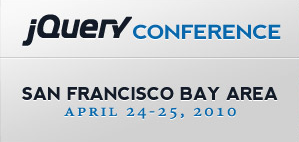By: Michal Golebiowski-Owczarek, Felix Nagel, and the jQuery team
Editor’s Note: the following blog post was originally published to the OpenJS Foundation Blog.
The jQuery project is actively maintained and widely implemented — it’s used by 73% of 10 million most popular websites. As part of its ongoing effort to modernize the project, jQuery maintainers have taken steps to wind down one of its projects under the jQuery umbrella through a careful transition.
Today, jQuery UI announced version 1.13 — its first release in 5 years and the project’s final planned release. Perhaps the most important update is that jQuery UI 1.13 now runs on the latest version of jQuery Core, providing a number of browser compatibility and security updates that have been missing from previous releases, in addition to community fixes and improvements. The jQuery UI Download Builder has also been restored and updated so developers can continue to download UI along with their favorite themes. The release is part of an ongoing series of updates across all jQuery projects.
jQuery UI is in maintenance-only mode. Users should not expect any new releases, though patches may be issued to resolve critical security, interoperability, or regression bugs. Trac, the project’s bug-tracking tool, has been put in read-only mode and developers are asked to file any critical issues on the project’s GitHub repository.
jQuery UI was first launched in September 2007 as a curated set of user interface interactions, effects, widgets, and themes built on top of the jQuery library. It quickly gained popularity because it was one of the best tested and most accessible UI frameworks of its time. The tool helped developers build UI components such as form controls and date pickers using the best practices back then. In its heyday, jQuery UI was adopted by a broad set of enterprises including Pinterest, PayPal, IMDB, Huffington Post, and Netflix.
Today, jQuery UI continues to be an important testbed for jQuery Core updates, helping the maintainer team spot bugs and interoperability issues that arise as the web platform evolves.
Celebrating jQuery UI’s History
With the launch of jQuery in 2006, web developers were able to access and manipulate DOM and CSS faster and easier than ever before. Thousands of open source jQuery widgets and plugins were created to handle previously tricky problems, like showing and hiding elements, rotating through image carousels, or picking dates on a calendar. The jQuery ecosystem became a playground full of tools for making new and interesting interactions possible on the web.
‘New and interesting’ doesn’t always translate to ‘good and useful’ — though there were many good plugins available, it was not always easy to tell which would be the most performant or provide the best user experience. Developers might have to go searching for the right tools or worse, spend significant time swapping through several plugins to figure out which one worked best. Further, there were few examples of best practices in user experience on the web, so visitors to one website could have vastly different (and thus confusing) interactions when they performed a similar task on another website.
Members of the jQuery Core team wanted to help developers write performant, high-quality, and reusable jQuery components for their sites and applications. After some discussion, the idea for a second library with strict standards for coding, documentation, and theming was born. The project’s vision and goals included: developing a collaborative design process; providing flexible styling and themes; creating elegant visual and interaction design; providing a robust API; and prioritizing progressive enhancement, accessibility, internationalization and localization support.
In September 2007, jQuery UI officially launched as a set of user interface interactions, effects, widgets, and themes built on top of jQuery. Soon after, the team shifted their focus to provide a full set of APIs and methods to allow developers to create flexible, full-featured widgets that met high standards of quality. CSS effects such as easing and animation were added in and helped developers create more modern, enhanced experiences. The team at Filament Group later added a ThemeRoller, allowing developers to get started quickly by providing customizable theme boilerplate. ThemeRoller is still operational today.
By the end of 2008, jQuery UI had an exploding community of users, developers, and interaction designers regularly providing updates and improvements to the project as best practices and style preferences evolved. Between 2009 and 2016, the community provided a variety of new official and unofficial themes and plugins, interoperability and other bug fixes, robust testing processes, and support for multiple versions of jQuery.
jQuery UI’s prior official release came in September 2016, nearly a decade after it started. In that timeframe, the jQuery community had helped inspire dozens of other open source projects, pattern and component libraries. But newer CSS frameworks and approaches were taking hold, and slowly the community moved on to other projects. The UI team and jQuery Mobile teams merged, and the group focused more on maintenance and compatibility with jQuery Core.
jQuery UI became an OpenJS Foundation Emeritus project in 2018, recognizing that it was winding down while noting the significance it had for the JavaScript ecosystem.
Celebrating jQuery UI Maintainers and Contributors
The scope of the project and the inclusiveness of the community was responsible for helping countless web makers develop a love and appreciation for user experience, localization, internationalization, accessibility, and clean, reusable code. Though many hours of work and contribution went into making jQuery UI a successful library, the jQuery UI core team deserves extra recognition for more than a decade of hard work shepherding the work and the community throughout the project’s lifecycle. Alex Schmitz, Jörn Zaefferer, Felix Nagel, Mike Sherov, Rafael Xavier de Souza, and Scott González led a team of many core contributors and more than 300 additional authors.
Additional gratitude is owed to Michał Gołębiowski-Owczarek for preparing the 1.13 release and stewarding the repository for the past year.
OpenJS Foundation will forever be grateful for the work of these open source developers and the impact they had on the ecosystem through their work. Please join us in celebrating these developers and jQuery UI!







